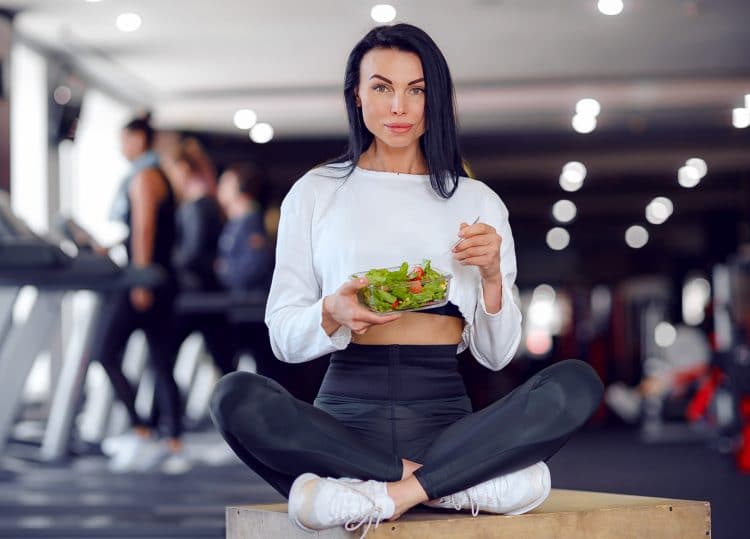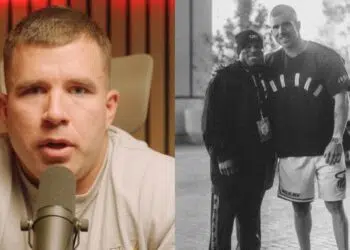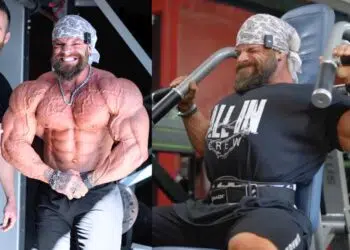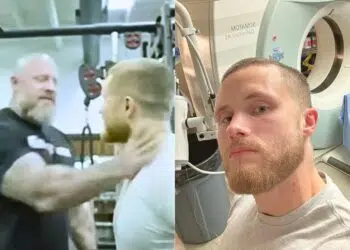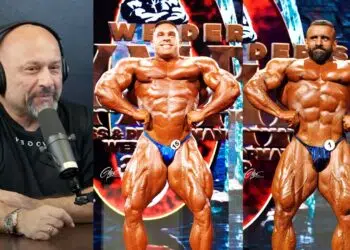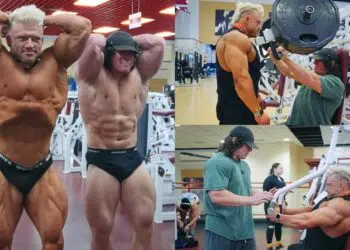You probably did a double-take when you saw this article’s title. Fitness Volt is, after all, all about building muscle and getting stronger. So, talking about losing muscle might sound out of place.
You might also wonder who in their right mind would want to get rid of muscle mass. As it turns out, there are some good reasons to do so.
You may want to look more athletic or fix muscle imbalances. Furthermore, you might want to slim down as you grow older.
Whatever the reason, knowing how to lose fat safely and effectively without losing strength is essential. This article is the ultimate guide to losing muscle safely.
Why Lose Muscle?
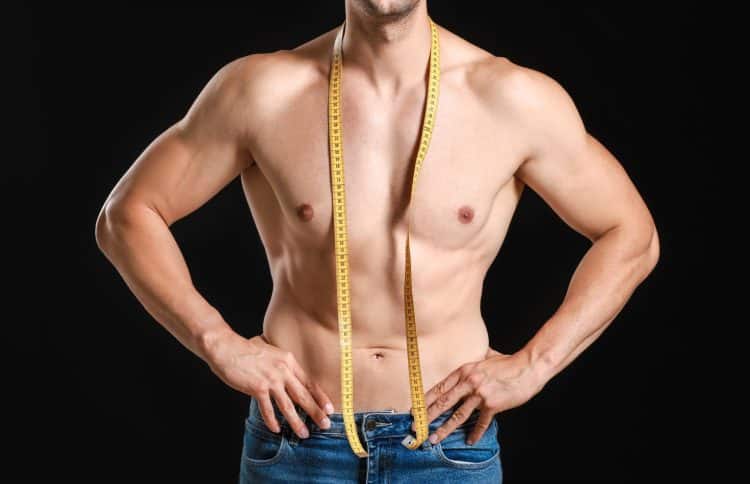
Here are four reasons why a person might want to lose muscle:
- A person may have a medical condition such as muscle dystrophy that causes muscle wasting.
- Someone might have excessive muscle mass and wants to reduce their size.
- A competitive bodybuilder or physique competitor might want to shred to meet a specific weight class or body fat percentage.
- A person may have muscle imbalances and want to reduce muscle mass in a specific area to improve their posture or alleviate pain.
It is important to note that losing muscle mass can negatively affect overall health and fitness, so it is important to consult a healthcare professional or a qualified fitness professional before losing muscle.
Level Up Your Fitness: Join our 💪 strong community in Fitness Volt Newsletter. Get daily inspiration, expert-backed workouts, nutrition tips, the latest in strength sports, and the support you need to reach your goals. Subscribe for free!
How Muscles Grow
To lose muscle safely, you must understand the process of gaining muscle.
Hypertrophy involves an increase in the size of muscle fibers. This process is triggered by increased demand on the muscles, such as through resistance training.
When a person engages in resistance training, they are placing a demand on their muscles greater than what they are accustomed to. In response, the muscles will repair and grow to better handle that demand in the future.
The process of muscle growth begins with the activation of muscle fibers. When a muscle contracts, the fibers that make up the muscle are activated. The more fibers that are activated, the greater the force that the muscle can generate.
After the muscle fibers activate, they begin the repair and growth process. This process begins with the release of hormones such as testosterone and growth hormone.
The muscle fibers increase in size by increasing the number of myofibrils, which are the contractile units of muscle fibers. The myofibrils will also increase in size, leading to an increase in the overall size of the muscle fiber.
The muscle fibers also begin to increase the number of mitochondria, which are the energy-producing units of the cell. This increase in mitochondria will allow the muscle to generate more energy, which will, in turn, allow the muscles to generate more force.
In addition to the changes within the muscle fibers, the body will also begin depositing more connective tissue around the muscle fibers. This connective tissue will hold the muscle fibers in place and support the muscle as it grows.
The overall muscle growth process is complex and is influenced by various factors such as genetics, age, gender, nutrition, and overall health. Regular resistance training and adequate protein consumption to support muscle repair and growth are essential.
Another critical factor is progressive overload — the gradual increase of resistance or weight the muscle is exposed to. This will help the muscle to adapt and grow.
Proper recovery is also essential for muscle growth. The muscle fibers need time to repair and grow, and this process occurs primarily during rest and recovery. Adequate sleep and rest days between resistance training sessions can help optimize muscle growth.
Nutrition also plays a key role in muscle growth. Adequate calorie intake and a balanced diet with enough protein, carbohydrates, and healthy fats are essential to provide the necessary energy and nutrients for muscle growth.
It’s important to note that muscle growth is a gradual process that takes time. Seeing results from resistance training and proper nutrition can take several weeks or even months. It’s also important to note that muscle growth is not just about physical appearance; it also improves overall health and fitness by increasing your strength, endurance, and metabolism. [1]
How to Lose Muscle Mass
To lose muscle, you must do the opposite of what you need to do to gain it. That means reducing your caloric intake and changing how you train.
Here are three key changes you should make:
- Food: Reduce your caloric intake below your daily maintenance level, which is the amount you need to meet your energy needs. When you eat below your maintenance level, you enter a calorie deficit, forcing your body to compensate for the energy shortfall by breaking down stored fat and muscle tissue.
- Weight Training: Rather than lifting heavy in the 8-12 rep range, which is best for building muscle, reduce the weights and increase the reps. Furthermore, train twice per week. This training regimen will help you maintain a toned, athletic look without the bulk.
- Cardiovascular Exercise: Do steady-state cardio for extended periods to burn calories. We recommend doing six low-intensity steady-state (LISS) sessions per week. This could involve jogging on a treadmill, hiking in the woods, or riding an exercise bike.
Losing Muscle in Specific Areas of Your Body
It is common to have unproportionate muscle groups. Your legs could be bigger than your upper body, or your biceps might be overpowering your triceps.
You must lose size in your overpowering muscle groups to improve your aesthetics. For example, if you’ve got tree trunk quads that overpower your upper body, you must shrink the size of your thighs without compromising muscle mass up top.
Here’s how to adjust your lower body training to lose muscle mass in your legs:
- Stop squatting with additional resistance and replace it with bodyweight squats
- Do 3-4 low-intensity steady-state cardio sessions, such as jogging or cycling, every week
However, you should cut out the long, slow cardio if you are trying to build up your upper body while losing lower-body muscle mass. That’s because you’ll be burning calories needed for upper body mass.
How to Lose Muscle the Wrong Way
If you stop working out, you will lose muscle. But you’ll also lose strength and, most probably, gain fat.
According to research, you will lose strength within three weeks of stopping resistance training. If you cut back on your cardio workouts, your aerobic fitness will be significantly lower after just four weeks. [2] [3]
Level Up Your Fitness: Join our 💪 strong community in Fitness Volt Newsletter. Get daily inspiration, expert-backed workouts, nutrition tips, the latest in strength sports, and the support you need to reach your goals. Subscribe for free!
You must avoid getting weaker or becoming unfit while losing muscle. So, stopping exercise is not a good plan. Instead, you must readjust your workouts as recommended in this article.
Eating to Lose Muscle
You must be in a caloric deficit to lose weight, meaning you should take in fewer calories than your body burns to supply its daily energy needs. Although we usually relate this to losing fat, the same principle applies to muscle loss.
The first step to eating to lose muscle is to determine your current caloric maintenance level. This depends on multiple factors, including your weight, gender, and activity levels. Our tdee calculator can help you determine your maintenance caloric level.
Once you know your maintenance level, you must reduce your daily intake by 250-500 calories.
Cut Your Protein Intake
Next, you need to focus on the type of food you are eating. To gain muscle, you need to follow a high-protein diet. So, to lose muscle, you should do the opposite.
That means cutting back on:
- Red meat
- Chicken
- Tuna
- Protein powder
- Eggs
Besides helping build muscle, these foods contain nutrients important for overall health. So, you should not cut them out completely. You don’t need to consume a protein powder when trying to lose muscle, but you should still eat chicken, meat, or fish once or twice per week as part of your dinner.
Consider replacing animal products with plant-based proteins. Most plant-based proteins do not contain a complete amino acid profile, so they are not as effective for muscle growth.
In terms of overall daily protein intake, you should aim for around 0.35 grams per pound of body weight. [4]
Losing Muscle While Maintaining Strength
Maintaining strength while losing muscle mass can be challenging, as muscle is a key contributor to overall strength. However, it is possible to maintain or even increase strength while losing muscle mass by focusing on exercises that target specific muscle fibers called slow-twitch fibers, which are responsible for endurance.
Here are some strategies to maintain strength while losing muscle mass:
- Focus on high-rep, low-weight exercises.
- Incorporate cardio exercises such as cycling, swimming, or rowing.
- Focus on compound exercises such as push-ups, pull-ups, and squats which recruit multiple muscle groups.
- Maintaining a proper nutrition plan with adequate protein intake to support muscle growth and repair.
- Performing regular resistance training that focuses on slow-twitch fibers to maintain strength.
How Long Does it Take to Lose Muscle?
The time it takes to lose muscle depends on various factors, such as the amount of muscle mass a person has, their overall diet and nutrition, and the types and frequency of exercise they perform. In general, muscle loss can occur quickly with a drastic reduction in calorie intake or prolonged periods of inactivity.
Research indicates that muscle loss can occur at a rate of 1-2% per week if a person is completely inactive and not consuming enough protein. However, if a person is still performing resistance training and consuming enough protein, muscle loss may occur at a slower rate.
Is it Muscle or Fat You Need to Lose?
Some people who decide to lose muscle may find that it’s fat they should be shedding. Large, bulky muscles may contain a decent amount of fat, and it could be that fat that is making the muscle appear out of proportion to the rest of your body. The body part will be smaller and more defined after losing the fat and retaining the muscle.
To lose the fat surrounding your bulky muscles, you must continue your heavy-weight, low-rep workouts and follow a strict diet. Establish a 250-500 daily caloric deficit, and cut out all processed carbs and saturated fats. Maintain your protein intake and drink at least half a gallon of water daily.
You should also do high-intensity interval training (HIIT) for fat loss 2-3 times per week. This cardio is best for burning off stored body fat without eating into your muscle tissue. [5]
FAQ
Is it healthy to lose muscle?
Losing muscle mass is generally not considered a healthy goal. Muscles play an important role in overall health, including supporting bone health, maintaining good posture, and helping to control blood sugar and metabolism.
Muscle loss can occur due to aging, illness, injury, or inactivity, and it can significantly impact overall health and quality of life. It can lead to a decrease in strength, mobility, and independence, as well as an increase in the risk of falls, injuries, and chronic health conditions such as obesity, diabetes, and heart disease.
It’s important to note that muscle loss should not be a goal unless there is a medical condition that leads to muscle wasting or as a competitive bodybuilder or physique competitor. It is best done under a healthcare professional or a qualified fitness professional’s supervision.
Instead of losing muscle, it’s important to maintain muscle mass through regular exercise and adequate protein intake and focus on overall health and fitness by maintaining a healthy diet, engaging in regular physical activity, and managing stress levels.
Is it hard to lose muscle?
Losing muscle mass can be challenging, as muscle is an important contributor to overall health and fitness. It can be difficult to spot-reduce muscle, as weight loss can also include loss of fat and other tissue.
Losing muscle mass can occur due to various factors, such as age, illness, injury, or inactivity. It can also occur if a person participates in excessive cardio, does not consume enough protein, or performs resistance training to maintain muscle mass.
It is important to maintain muscle mass through regular exercise, adequate protein intake, and a balanced diet to prevent unwanted muscle loss. Resistance training, especially targeting slow-twitch fibers, will also help maintain muscle mass.
How do you lose muscle naturally?
Losing muscle mass naturally can result from aging, illness, injury, or inactivity. However, it is generally not a recommended overall health and fitness goal. Here are some factors that can contribute to natural muscle loss:
- Aging: As we age, muscle mass naturally decreases, making it harder to maintain muscle strength and power.
- Inactivity: Prolonged periods of inactivity, such as bed rest or a sedentary lifestyle, can cause muscle loss.
- Poor nutrition: Not consuming enough protein, which is essential for building and maintaining muscle, can lead to muscle loss.
- Illness or injury: Certain medical conditions or injuries can cause muscle loss.
How do muscles grow?
Muscle growth is the increase in the size of muscle fibers. This process is triggered by an increased demand placed on the muscles, such as through resistance training. Genetics, age, gender, nutrition, and overall health can influence muscle growth. Regular resistance training, proper recovery, and a balanced diet with adequate protein, carbohydrates, and healthy fats are essential for maximizing muscle growth.
Summary
To lose muscle, you need to do the opposite of what you would do to build muscle. That means remaining in a calorie deficit, cutting back on protein, and reducing the intensity and duration of your workouts. We don’t recommend stopping your workouts, as that would result in losing strength and overall fitness.
Follow these recommendations to reshape your body by strategically losing muscle while staying healthy, strong, and fit.
References
- Schoenfeld BJ. The mechanisms of muscle hypertrophy and their application to resistance training. J Strength Cond Res. 2010 Oct;24(10):2857-72. doi: 10.1519/JSC.0b013e3181e840f3. PMID: 20847704.
- McMaster DT, Gill N, Cronin J, McGuigan M. The development, retention and decay rates of strength and power in elite rugby union, rugby league and American football: a systematic review. Sports Med. 2013 May;43(5):367-84. doi: 10.1007/s40279-013-0031-3. PMID: 23529287.
- Pedlar CR, Brown MG, Shave RE, Otto JM, Drane A, Michaud-Finch J, Contursi M, Wasfy MM, Hutter A, Picard MH, Lewis GD, Baggish AL. Cardiovascular response to prescribed detraining among recreational athletes. J Appl Physiol (1985). 2018 Apr 1;124(4):813-820. doi: 10.1152/japplphysiol.00911.2017. Epub 2017 Dec 6. PMID: 29212672.
- Wu G. Dietary protein intake and human health. Food Funct. 2016 Mar;7(3):1251-65. doi: 10.1039/c5fo01530h. PMID: 26797090.
- Batrakoulis A, Loules G, Georgakouli K, Tsimeas P, Draganidis D, Chatzinikolaou A, Papanikolaou K, Deli CK, Syrou N, Comoutos N, Theodorakis Y, Jamurtas AZ, Fatouros IG. High-intensity interval neuromuscular training promotes exercise behavioral regulation, adherence and weight loss in inactive obese women. Eur J Sport Sci. 2020 Jul;20(6):783-792. doi: 10.1080/17461391.2019.1663270. Epub 2019 Sep 16. PMID: 31478436.



